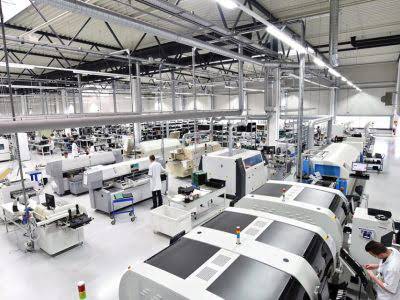
Properly separating product costs and period costs is critical for accurate financial reporting. Product costs include direct labor, direct materials, and manufacturing overhead, retained earnings directly tied to production. Period costs, such as administrative costs, are unrelated to production and must be reported separately.

Terms Similar to Absorption Costing

When it comes to valuing inventory, absorption costing is often the preferred method as it applies part of the fixed manufacturing overhead costs to the unsold units. Despite its widespread use and compliance with accounting standards, absorption costing is not without its detractors. One of the primary critiques is that it can potentially distort a company’s financial performance, particularly in the short term. By deferring the recognition of fixed costs, absorption costing can inflate profits in periods of increasing inventory, which may not accurately reflect the economic reality of a company’s operations. This can lead to decisions that prioritize production over market demand, resulting in excess inventory and potential write-downs in the future. Understanding why absorption costing is important requires diving into its alignment with external reporting and tax regulations.
- The simplicity of this method can be a boon, but it might not give a complete picture of costs like absorption costing.
- While this method can lead to a more accurate reflection of service costs, it also requires careful consideration of how to define and measure service units or projects for cost allocation purposes.
- By using automated processes, businesses reduce manual errors and improve the accuracy of inventory costs and external reporting.
- Absorption costing has both benefits and drawbacks depending on how a company uses it for financial reporting and decision-making.
- This creates a misleading financial picture, affecting decisions related to pricing, production, and investment.
- These costs include direct materials, direct labor, and both variable and fixed manufacturing overhead expenses.
Calculating Absorption Cost For Manufacturing Businesses
The term absorption costing refers to the method in which the entire production cost is allocated to each and every output proportionately. It is a very common method used widely in the business especially in the manufacturing sector, and in this way the company is able to determine the cost of individual product and services. Fixed manufacturing overhead costs are indirect costs and they are absorbed based on the cost driver. Absorption costing, also referred to as full absorption costing, is an important accounting method that assigns all costs related to producing a product, ensuring every unit reflects its full production costs.
Absorption Costing Steps
This makes absorption costing more suitable for financial reporting but less useful for certain managerial decisions. In the manufacturing sector, absorption costing is particularly relevant due to the significant role of fixed costs in production. Manufacturers often incur substantial fixed costs in the form of machinery, plant maintenance, and labor contracts. By applying absorption costing, these fixed costs are spread over the units produced, which can smooth out the cost per unit over time, especially in industries with seasonal production cycles or fluctuating demand. This can be particularly useful for long-term pricing strategies and inventory management. Moreover, the method can provide a more stable basis for performance evaluation, as it avoids the potentially misleading cost fluctuations that can arise from only considering variable costs.

- By applying absorption costing, these fixed costs are spread over the units produced, which can smooth out the cost per unit over time, especially in industries with seasonal production cycles or fluctuating demand.
- If the company sells only 4,000 units, the remaining 1,000 units retain a portion of fixed costs in inventory, delaying some expense recognition until those units are sold.
- On the downside, things can get a little tricky when it comes to making an exact calculation of absorbed costs, and knowing how much of them to include.
- This can lead to a situation where reported profits are higher in periods of increasing inventory levels, as some of the fixed costs are deferred to future periods.
- The following subsections delve into how absorption costing is utilized within these diverse business environments.
An effective review process ensures that product and period costs remain accurate, preventing discrepancies in balance sheet entries and income statements. Advances in technology have made implementing and analyzing absorption costing more efficient. Modern enterprise resource planning (ERP) systems can track costs in real time, automate overhead allocation, and generate detailed reports. These tools help businesses overcome some of the traditional challenges of absorption costing, such as accurately allocating fixed absorption costing costs. Absorbed overhead is manufacturing overhead that has been applied to products or other cost objects. This is important for financial reporting and decision-making because it takes into account both variable and fixed production costs.
This streamlining improves the accuracy of financial reporting and enhances the visibility of cost components, reducing manual errors and time-consuming processes. Implementing absorption costing poses several challenges that businesses should consider. The cost calculation is assigned to the product in batches (a non-recurring collection of several production units) and LOTS (production unit, linked to the serial numbers of a product). For example, in the case of Apple’s iPods, failing to account for fixed overhead could Interior Design Bookkeeping result in underpricing, potentially leading to losses even as sales appear strong. This enables businesses to make informed decisions and maintain accurate financial records in a complex manufacturing environment. Expenses incurred to ensure the quality of the products being manufactured, such as inspections and testing, are included in the absorption cost.